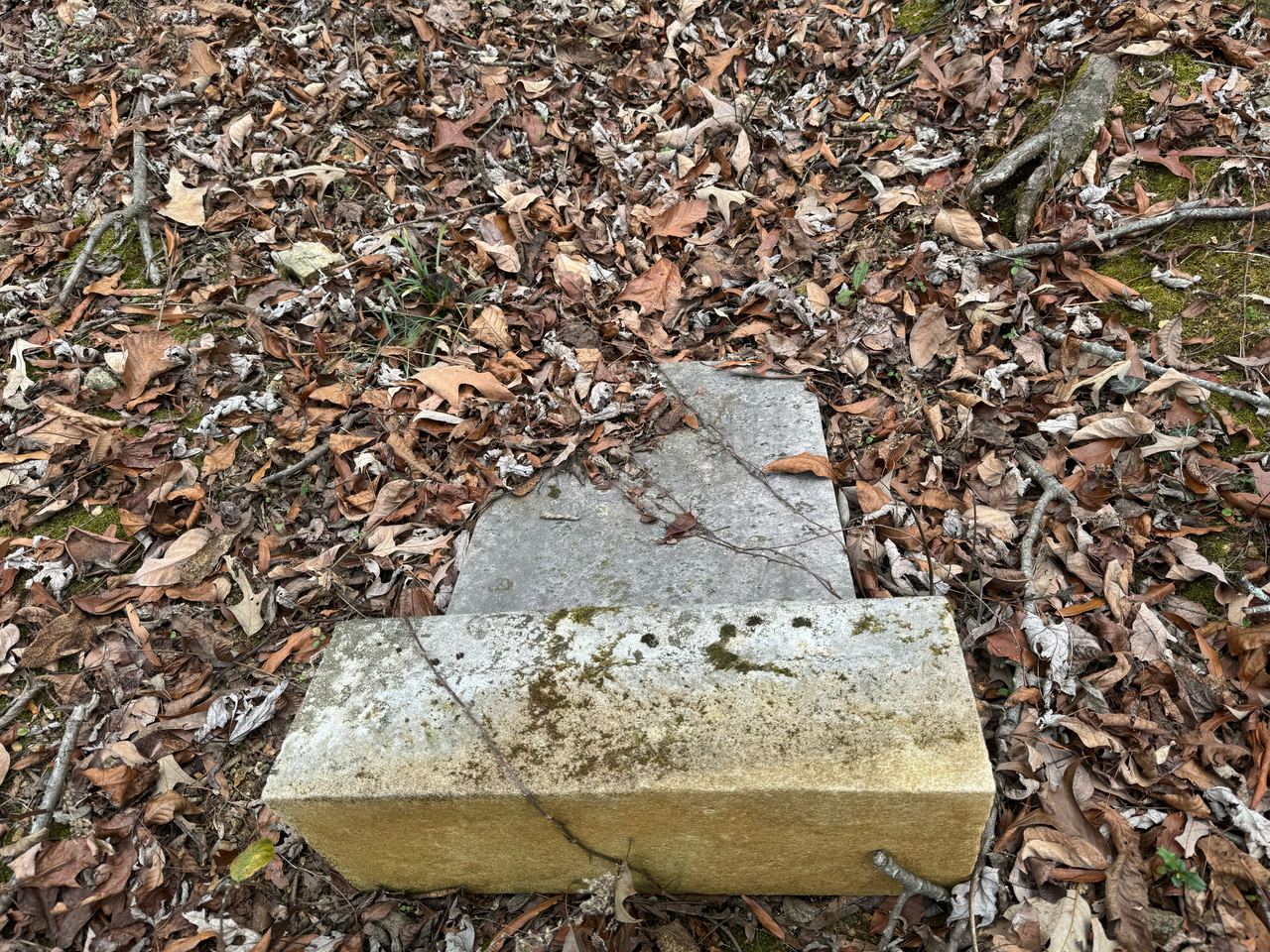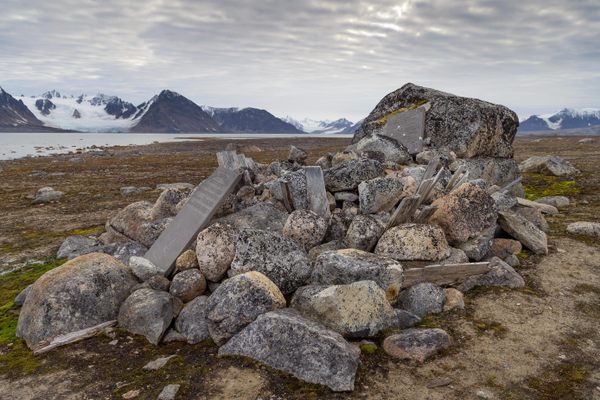Surprise! You Own a Long-Lost Cemetery
Families across the U.S. are finding each other through a forgotten, historically Black graveyard.
It was a regular December day in Los Osos, California when Levi Henry received a meeting invitation from community volunteers in Tennessee. They wanted to talk to him about a cemetery in Chattanooga. Having grown up in Los Angeles, Henry had never been to the Southern city before, but knew it was where his father was from. He decided to attend the meeting.
It turned out to be quite the overwhelming Zoom call for Henry. The volunteers gave details he’d never heard regarding his ancestors. Then they explained he is a co-owner of Pleasant Garden Cemetery in Chattanooga, inherited from his great-grandfather.
“I was never looking for anything like this, never expecting it,” Henry says. He found out he’s part co-owner along with his siblings, cousins, and some relatives he’d never met. “Then the word liability started coming up. It’s a cemetery that’s run down, and you guys own it, and it’s a liability.”
Pleasant Garden Cemetery lies on the slope of a ridge on the outskirts of Chattanooga. Spread across 17.5 acres, the overgrown tombstones are both elegant and a little spooky. Leaves blanket the hills, 100-year-old trees have toppled some headstones, and many hillsides have sunken pits, where deserted graves have caved in.

“It is possibly one of the worst conditions of a cemetery that I’ve seen in several years,” says Stefanie Haire, public history phD student at MTSU. Despite growing up in Chattanooga, Haire had never heard of Pleasant Garden Cemetery. She first visited in order to research her dissertation, in search of the city’s first Black photographer, Horace Brazelton. “There’s extensive damage, but even in spite of all of that damage and disarray, there is such an electrifying feeling by simply walking through the paths that are there… I was kind of hooked on the cemetery at that point.”
Now Haire works to restore the cemetery with the African American Cemetery Preservation Fund. Haire trains volunteers to clean headstones with a nontoxic solution that eats organic material like mold out of the porous stone. The cleaning solution leaves behind a brighter headstone with markings that are easier to read.
Haire is also planning a five-year documentation project, where she’ll use lidar and GIS applications to plot every grave and figure out who each headstone belongs to. She’s hoping to produce a digitized map of the land.
“Once we get this interactive map built with all of the transcriptions entered in from the headstones, that’s going to open up a world of possibilities in terms of descendants being able to visit their ancestors’ burial ground,” she says. “Also in terms of finding more of these uncovered stories that I know are there, but we just have to put names to some of these people in order to find them first.”

Some of Pleasant Garden’s most well-known inhabitants were victims of racialized violence during the Jim Crow era. Chattanooga’s last lynching victim, Ed Johnson, is likely the most visited gravesite in the cemetery. Leroy Wright, one of the Scottsboro boys, is also among the documented buried.
But architect Farida Abu-Bakare says it can be challenging to track historical information for Jim-Crow-era cemeteries. Written records put the figure of people buried at Pleasant Garden between 10,000 and 12,000. Preliminary survey results of the grounds estimate the actual number is double.
“Records from that period may be incomplete, lost, or never formally recorded, especially for marginalized groups like African Americans,” says Abu-Bakare, who’s the director of Global Practice for WXY Architecture and Urban Design. “The task often requires extensive research, including the use of historical documents, oral histories, and archaeological methods to identify unmarked graves.”
Research into the records is just beginning, but a handful of people are already learning about ancestors that are buried in Pleasant Garden. Horace Brazelton’s descendants now know where he’s buried in the cemetery. Beverly Foster, the founder of Walker County, Georgia’s African American Museum, found her aunt’s grave. She’s still looking for the headstone of her great-grandmother who’s buried there, according to her death certificate.
Donivan Brown is another who discovered a lost relative in the cemetery. He helps coordinate quarterly cleanup days with the African American Cemetery Preservation Fund, and he found out he had a cousin who was born and died on the same day in 1965.
“It was almost as if I was watching the story unfold on television,” Brown says. “The grounds on which I’ve walked upon, organized work days, and worked myself told the stories of the cemetery. Along the way, a soul within my family was, in essence, there with me the entire time. It was moving, stirring, confirming that even on a more complex level, a familiar level, it’s a worthwhile effort to pursue the restoration of the cemetery.”

The fact that the cemetery is Black-owned is also significant. Historians have uncovered that a postman named Richard L. Cleage bought 11 acres of land in 1890 to start Pleasant Garden Cemetery as a burial ground for Black Americans. The following year, Cleage organized a board of directors, comprised of Chattanooga lawyers, watchmakers, and business owners. The board erected a stone obelisk etched with their names and placed it at the apex of the cemetery. Land was added and ownership changed a couple times until Henry’s great-grandparents, Levi A. and Maggie L. Young bought it at a sheriff’s sale in 1937.
It’s unusual for a Black family to have maintained ownership of such a historic property, according to Anne Bailey, a historian at Binghamton University and author of The Weeping Time.
“What’s much more common is the loss of land and disconnection to where they owned it,” Bailey explains. “If this project is pulling the family together and pulling those threads together, I want to commend that.”
Historians at the Middle Tennessee State University’s Center for Historic Preservation are drafting an application to get the cemetery listed on the National Register of Historic Places. Admission is a lengthy process, but if accepted, it would be among just 2% of historic places that preserve Black American spaces, according to Bailey.

In October 2023, Henry decided he needed to visit the cemetery. Before meeting with staff members, he took a melancholic walk through the grounds, distressed by the condition of the graveyard. His disposition changed when he saw Levi A. Young’s headstone, whose first name he shares. In that moment, he knew he’d been called to be a steward and continue the work his great-grandfather started.
“It’s beyond historical. It’s sacred,” Henry says. “We’re dealing with the final resting place, in terms of their physical bodies, of all these people, many of whom have quite a story behind them. It goes beyond the understanding of earthly things.”
Due to its cultural and historical significance, the city of Chattanooga is interested in restoring it too. Blythe Bailey, Director of Design for Chattanooga’s Parks and Outdoors, says city officials are ready to assist once they hear from the owners.
Despite being spread across the country, the descendants of Levi A. Young are meeting periodically on video calls to figure out their next move. Henry says they’re building trust with each other as they decide the fate of the historic property.




























Follow us on Twitter to get the latest on the world's hidden wonders.
Like us on Facebook to get the latest on the world's hidden wonders.
Follow us on Twitter Like us on Facebook